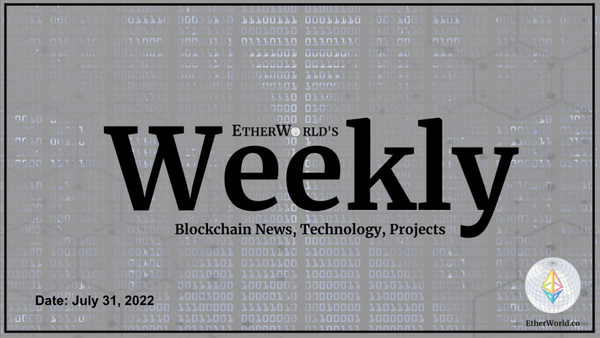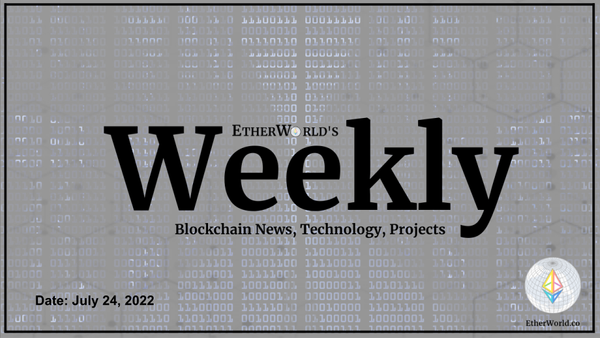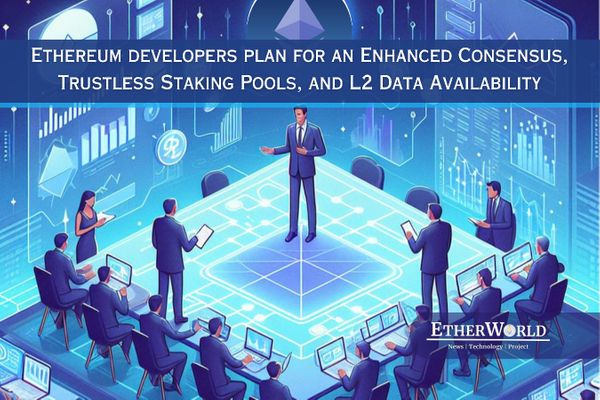The ground-breaking zero-knowledge technology, which will greatly boost
Ethereum scaling, was introduced to the Ethereum ecosystem this past
week. Three well-known protocols (Polygon, zkSync, and Scroll) have
launched these in an effort to increase Ethereum and its fundamental
principles' level of acceptability.
Table
- What are zero-knowledge proofs?
- Polygon launched zkEVM, the first EVM-equivalent ZK L2
- zkSync 2.0 launching in 100 days
- Scroll launched zkEVM-based zkRollup
What are zero-knowledge proofs?
A zero-knowledge protocol is a way for one party (the prover) to
convince another party (the verifier) that a certain claim is true
without disclosing any other information.
For instance, if you tell a service provider that you are a citizen of
your nation, you must present "proof" such as your passport or
driver's licence. However, there are issues with this strategy, most
notably the invasion of privacy. The central databases that store
Personally Identifiable Information (PII) shared with third-party
services are susceptible to hacking. There are requests for additional
privacy-protecting ways to share sensitive information as identity theft
grows in importance.
This issue is resolved by zero-knowledge proofs, which do not require
information to be revealed in order to establish the truthfulness of
claims. The statement (also known as a "witness") is used as input by
the zero-knowledge protocol to produce a brief proof of its validity.
Referring to our earlier example, the only proof you require to support
your claim of citizenship is a zero-knowledge proof. To be persuaded
that the underlying statement is true as well, the verifier simply needs
to determine whether a few properties of the proof are true.
To learn more about this topic I will link a doc released by the
Ethereum org - Zero-knowledge proofs |
ethereum.org
Polygon launched zkEVM, the first EVM-equivalent ZK L2
The Polygon zkEVM is a complete EVM counterpart that inherits
Ethereum's security while boosting throughput and drastically lowering
fees. Any smart contract or development tool that you can use on
Ethereum can be utilized on Polygon zkEVM thanks to EVM-equivalence. The
ZK team behind polygon technology claims to have sped up proof
generation. As a result, Polygon zkEVM is prepared for prime time. Users
will notice a sharp reduction in prices and an increase in speed.
The Polygon zkEVM's EVM-equivalence is much more intriguing. Similar to
how you would build on Ethereum, you can develop on Polygon zkEVM. Any
Ethereum smart contract is deployable. Any toolset that is compatible
with Ethereum is compatible with Polygon zkEVM. Do anything you would do
on Ethereum, but more cheaply and quickly, and have the Ethereum network
validate it using a ZK validity proof. Although it has ZK scalability,
it is Ethereum. The testnet will soon be live.
We are proud to announce a giant leap forward for Ethereum scaling and ZK innovation.
— Polygon - MATIC 💜 (@0xPolygon) July 20, 2022
Introducing Polygon #zkEVM, the first EVM-equivalent ZK L2.
Today we’re releasing a complete implementation, fully open-source, and we’re just getting started.
[1/6] pic.twitter.com/P929DRCT1y
zkSync 2.0 launching in 100 days
The zkSync community aims to accelerate the widespread adoption of
cryptocurrencies for personal sovereignty while keeping in mind the
Ethereum ethos. In 100 days, the zkSync 2.0 will go live on the Mainnet.
These are the features of zkSync 2.0:
-
zkSync is EVM and web3 compatible.
-
Supports Solidity and Vyper: no security re-audit required.
-
Porting is effortless: 99% of tooling will work out of the box.
-
With zkSync your project will inherit the full security of Ethereum.
-
You will benefit from more transactions per second and lower gas fees.
-
Build on zkSync 2.0 now and be permanently future-proof.
They have also claimed that the zkSync 3.0 will also be introduced very
soon. Along with increasing the speed and reducing transaction costs
without compromising the security of the network they have also
committed the following-
-
They have elected to adopt the use of a public roadmap from this moment forward.
-
Each update to their public roadmap will be paired with AMA sessions that will include access to their founding CEO, chief product officer, and head of engineering.
-
Each milestone will detail exactly what will be delivered.
-
For key milestones, like launching on mainnet, they will share release dates as the milestones approach.
-
For milestones further in the future, they will always include a high-level assessment of long-term timelines so you can make appropriate decisions.
-
On their road to mainnet, there should be no breaking changes under almost all circumstances. However, if there is ever a situation where a breaking change does occur they will detail it in advance, and plan for a developer-friendly deprecation timeline.
Over the last year, we've been heads down working to scale Ethereum and accelerate its adoption.
— zkSync (@zksync) July 20, 2022
Today, we’re happy to announce that zkSync 2.0 – the first zkEVM rollup – will be live on mainnet in 100 days.
Our public roadmap for the rest of the year: https://t.co/wRjxJGoQwN pic.twitter.com/FuttnPWxZY
Scroll launched zkEVM-based zkRollup
A pre-alpha testnet version of Scroll for external testers has been
introduced by Scroll in close collaboration with the Privacy and Scaling
Explorations team at the Ethereum Foundation. They will be taking on as
many external testers as they can for this first testing before the
public testnet release.
If you'd like to be an early tester, sign up at
[signup.scroll.io]{.ul} for access.
They are dedicated to releasing the zkEVM in a way that enables them to
work through any issues in a focused manner and take comments into
account because they genuinely believe that it will play an important
role in scaling Ethereum in the future.
This initial release will be run on a private PoA fork of Ethereum (the
testnet L1) operated by Scroll. On top of this private chain, we will
run a testnet Scroll L2 supporting the following features:
-
Users will be able to play with a few key demo applications such as a Uniswap fork with familiar web interfaces such as Metamask.
-
Users will be able to view the state of the Scroll testnet via block explorers.
-
Scroll will run a node that supports unlimited read operations (e.g. getting the state of accounts) and user-initiated transactions involving interactions with the pre-deployed demo applications (e.g. transfers of ERC-20 tokens or swaps of tokens).
-
Rollers will generate and aggregate validity proofs for part of the zkEVM circuits to ensure a stable release. In the next testnet phase, we will ramp up this set of zkEVM circuits.
-
Bridging assets between these testnet L1 and L2s will be enabled through a smart contract bridge, though arbitrary message passing will not be supported in this release.
They will soon roll out a more permissive and open alpha testnet after
their pre-alpha testnet. This will be made available on a public
Ethereum testnet and be accessible to everyone. You should specifically
anticipate the following characteristics:
-
Allowing developers to deploy smart contracts
-
Allowing anyone to run an archival Scroll node
-
Generating and aggregating more pieces of the zkEVM proof to be verified on-chain
After over a year of building our zkEVM-based zkRollup in close collaboration with the @PrivacyScaling group at the Ethereum Foundation, we are releasing the pre-alpha version of Scroll for external testers! 📜https://t.co/XNZGljaZ1s
— Scroll 📜 (@Scroll_ZKP) July 19, 2022
Read more
Read more about Ethereum in previous Bulletins -Ethereum Bulletin
Related articles
Disclaimer: The information contained on this web page is for education purposes only. Readers are suggested to conduct their own research, review, analyze and verify the content before relying on them.
To publish press releases, project updates and guest posts with us, please email at contact@etherworld.co.
Subscribe to EtherWorld YouTube channel for ELI5 content.
Support us at Gitcoin
You've something to share with the blockchain community, join us on Discord!








